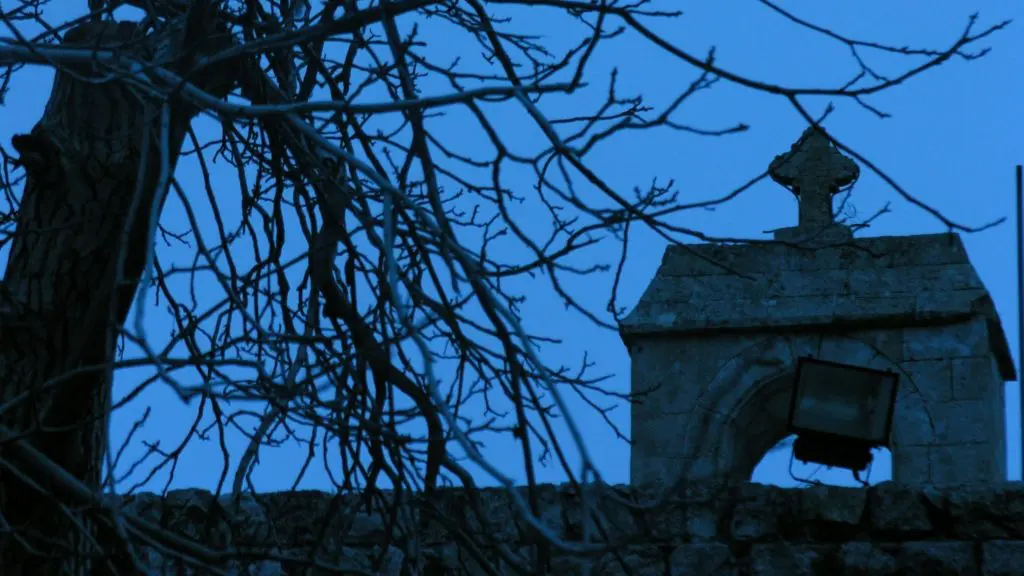Works by and about J.R.R. Tolkien represent a literary corpus both profuse and profitable: it seems that every few weeks a new volume of J.R.R. Tolkien’s work issues forth in the form of a reissue, a new edition, or a reframing of already-published work. Deluxe editions of The Lord of the Rings, The Hobbit, and The Silmarillion—all with Tolkien’s own illustrations—have been recently published. In a long-overdue development, the twelve-volume History of Middle-earth is being reprinted. Minor works and fragments are being turned into cohesive narratives, as in the form of the recent publication of The Fall of Númenor. And, beyond Middle-Earth, Tolkien’s collected letters have had a much-needed update towards Humphrey Carpenter’s original vision of an extensive and unabridged volume.
Amidst this outpouring of Tolkieniana comes the three-volume slipcased set of The Collected Poems of J.R.R. Tolkien, edited by Christina Scull and Wayne G. Hammond. The production of this collection fills a long-standing gap in the literature by collecting many poems—published and unpublished—written by Tolkien, and cataloguing them with their textual histories and variants, along with an extensive textual apparatus and numerous vital appendices. No longer will readers of Tolkien’s poetry need to chase his published verses, scattered across dozens of different, hard-to-find volumes—to say nothing of the unpublished work. Now, as with the critical edition of the poems of C.S. Lewis, edited by Don W. King, a single work will suffice to collect the vast majority of the most difficult-to-find works in the corpus and subject it to scholarly scrutiny and readerly attention.
After several decades of critical, scholarly responses to his work, Tolkien needs no book review of his poetry. That body of his work would remain a part of the established canon of English literature on the strength of Tolkien’s foundational contributions to the genre of fantasy, even if the poems themselves were not of such interest and truly splendid quality. Consequently, this review attends solely to the editorial and publishing decisions undertaken in the production of this new collection, confident in the assumption that Tolkien’s poetry is sufficiently consistent in artistry, and wide-ranging in both style and scope, that it can afford delights even to the most discriminating reader.
Scull and Hammond’s edition is a collected, rather than a complete, poetical collation, although they note that their effort includes “most of the works of poetry Tolkien is known to have written.” Their goal was not to collect all of the extant poetical work of Tolkien into these three volumes, but rather to compile those works which fit within a rationale that might best be described as showing ‘a reasonable need for collection.’ They describe their approach thus:
We have had to impose some economies of space. We have made a generous selection of poems written for The Hobbit and The Lord of the Rings, but omitted the greater part … We have also omitted a few shorter poems from ‘The Silmarillion’ … we have included only extracts from Tolkien’s longer poems, generally from the final version transcribed from an existing printing. We have included some verses which Tolkien left incomplete but developed to an extent, but not a few poems which for one reason or another are problematic … Finally, we excluded the majority of poems Tolkien composed in languages other than Modern English, while admitting a few examples in Old and Middle English, Latin, Gothic, Qenya (Quenya), and Sindarin.
Even with these limitations on inclusion, the three volumes include 195 entries of the roughly 240 poems that Tolkien is known to have written (depending upon how one counts revisions, etc.), and includes those verses complete with documentation of the textual histories and revisions for each of the poems, insofar as that information is available. The works that are readily available—in The Hobbit, The Lord of the Rings, The Silmarillion, and The History of Middle-earth—are represented by selections, with the reasonable assumption that readers will own or otherwise have access to those poems, because they are included in texts that are still in print.
The 195 entries of The Collected Poems of J.R.R. Tolkien span three volumes, and are catalogued in a full table of contents (including entries for all three volumes) available at the beginning of each volume. This editorial decision greatly increases the ease of use for the collection at the cost of only a few extra pages at the beginning of the second and third volume. Moreover, in line with other well-established approaches to collected verse, the editors have done their best to present the poems in a chronological format from earliest to latest, although they freely admit that there are challenges in so intending, and that not all of the poems can be perfectly dated. Nevertheless, they are right to observe that “A chronological order, even one after a fashion, best serves to illustrate Tolkien’s development as a poet.”
The collection begins with an exceptional and extensive introduction compassing a history of Tolkien’s poetic efforts and their publication, followed by the entire production history of the current text from idea to realisation, along with a detailed rationale for the inclusion and organisation of works, and followed by a poetical chronology. It is exceptionally well-written, despite the density of information and breadth of scope, and is in many ways the sort of thing that would justify publication on its own merits. As a short primer to Tolkien’s efforts in writing and publishing poetry, it is invaluable.
Across the three, sequentially-paginated volumes, each of the poems is presented with a textual introduction, assisted by copious notes, documentation of responses and textual variants, and extensive editorial commentary on the publication history and content. The textual apparatus is as thorough as could be wished, with nothing essential lacking. Even those poems included in the appendices have been afforded the same treatment as those in the main body of the text. Here, the editors show themselves capable of producing works at least as thorough as those of Christopher Tolkien, who so carefully documented his father’s textual revisions in The History of Middle-earth.
The five appendices collect “Limericks and Clerihews,” “Latin Adages,” “Poem Lists,” “Word Lists,” and “Bealuwérig,” the lattermost being Tolkien’s delightful Old English translation of Lewis Carroll’s “Jabberwocky.” In these appendices can be found many entertaining diversions, especially “Bealuwérig,” which is ripe material for memorisation and recitation. Following the appendices are a glossary, a bibliography, and an index, each of which has been carefully prepared so as to be useful, even for those who, like this reviewer, have a professional facility in Old and Middle English. The bibliography deserves particular praise not only for demonstrating the editorial thoroughness which underpins the collection, but also because it should establish a new starting point for any scholar intending to conduct research on Tolkien’s poetics. Indeed, it is to be hoped that this collection will inspire just such a flowering of Tolkien scholarship.
Before concluding, some remarks upon the quality of the volumes are in order, especially in this age of digital printing on demand and generally shoddy bindings (even for deluxe editions). The three hardcover volumes each have matching, embossed, gilt spine printing, and impressed art covers rather than dust jackets over cloth boards. All three volumes are case bound, with bound-in ribbons, printed and bound in Italy on FSC-certified paper. The volumes include a number of illustrations, including a double-sided glossy plate at the beginning of the first volume. The margins are wide enough to admit of annotation, and the typeface is comfortably sized for ordinary reading. Finally, an attractive slipcase snugly contains all three volumes, but not so tightly that they are difficult to remove.
Although the collection does not include the complete poems of J.R.R. Tolkien (a lofty goal which for now lies open to some future scholar), its rationale for the many poems that are included, combined with the extensiveness of what is on offer, make it an absolutely essential purchase for any Tolkien scholar, and for any lay reader who appreciates the beauty of Tolkien’s verse. The production quality ensures that these books will endure in one’s personal library, and that they will hold up to use and readership for decades, if not generations. With Tolkien’s star, like that of Eärendil, ever in ascendance, Scull and Hammond’s collection seems certain to delight future readers, even as Tolkien’s poetry continues to offer new worlds of delight to the weary readers of the here and now.







